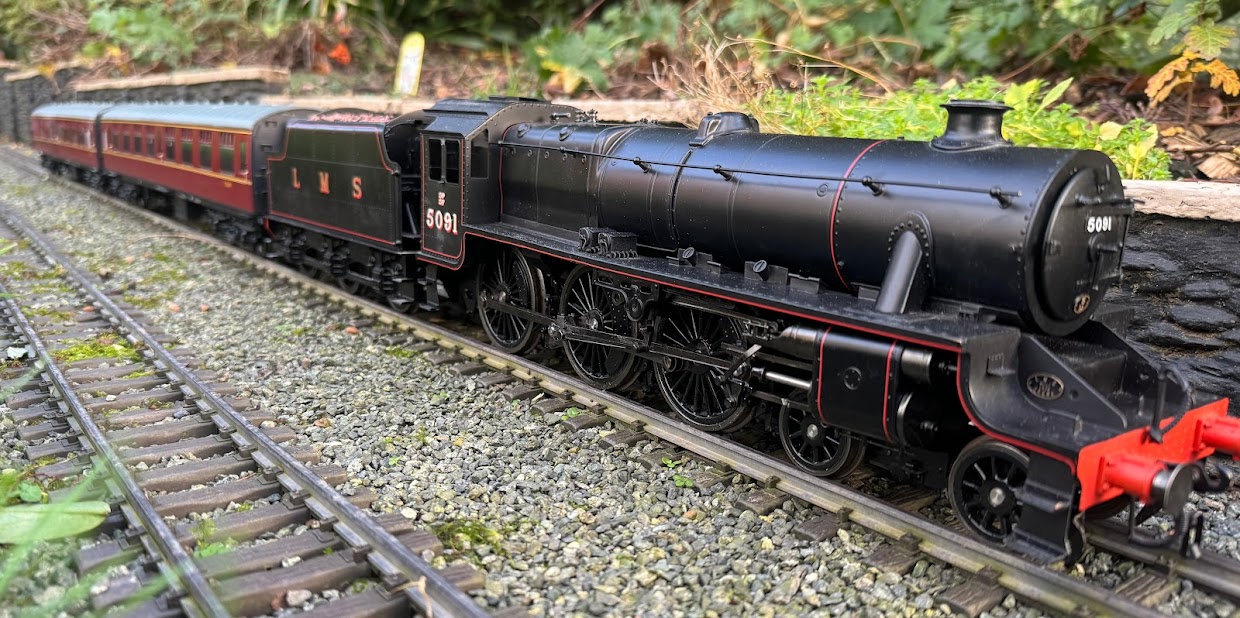We moved house in April 2017. Having said that I did not want a project, that’s exactly what we bought - a small bungalow built in 1960 in need of complete modernisation and extension, but having a large reasonably level garden - ideal for a garden railway. Unfortunately the garden had been largely neglected.
The plan was to buy the property and decide what we wanted to do with it while still living in our old house. It didn’t work out that way. We only had two weeks overlap so ended up living in a property that wasn’t really fit for human habitation.
Following the building work we’ve been in residence in our new home for just over two years and although the decorating isn’t finished we decided that this year would be the year of the garden, and hopefully the new railway.
Decisions Taken Before Track Laying
- First and foremost having a well-designed and beautifully planted garden is more important to us than having a railway. We aim to create a garden that can be enjoyed by all, not just railway enthusiasts, a garden which is a real pleasure to sit in and relax in. What we’re aiming to create therefore is a garden with a railway, not a garden railway. Having said this the garden will obviously be railway themed. The raised beds are being made from sleepers and the sheds will be painted to look like station buildings, signal cabins and plate layers huts.
- Obviously the railway should complement and enhance the garden and should be well integrated into it. This means that the railway must be at ground level. When I’m too old to operate a ground level railway I will take it up, sell everything and find a new hobby.
- I rarely ran anything on the Sandwell Valley Railway (SVR) purely for pleasure. The railway was my film set where I created my videos. I learned my trade from the Pine Tree Junction Film Unit and tried (but didn’t always succeed) to keep the house, sheds, fences and anything else that stuck out like a sore thumb out of frame. The track on the new railway will be laid well away from any structures which would look incongruous when filming.
- I’ve chosen a name for the new railway. I’ve always loved the name of the Cleobury Mortimer and Ditton Priors Light Railway. What a wonderful name. In my mind it conjures up an image of a little used country railway running through quintessential English countryside with tiny stations serving sparsely populated villages with very little passenger traffic but in its heyday providing an essential means of moving farm produce and livestock. I now live in Stoke Prior, a village on the outskirts of Bromsgrove and near to the village of Wychbold. So the name I’ve chosen is the Wychbold and Stoke Prior Light Railway (WASP).
- My favourite garden railways are the ones that as based on British narrow gauge lines such as the Leek and Manifold Valley, the Welshpool and Llanfair, The Welsh Highland and the Lynton and Barnstable, and I have collection of locomotives and rolling stock suitable for this type of railway. However having a narrow gauge line doesn’t lend itself to storytelling whereas a line populated by Thomas and his friends does. So my new railway will have to be a compromise. It will have both double track and single track sections and hopefully the single track section will double as either a British narrow gauge line or an Island of Sodor branch line.
- This is an opportunity to reflect on what worked well on the SVR and what didn’t. I liked the rockery with the tunnels through it, the pond with the bridge over it, the over bridge by the station and of course the viaduct with its under arch bridge. I would like to incorporate similar features into the new railway, and I would also like a stream. I really like the idea of the single track section gently meandering next to the stream and occasionally crossing over it. I can already picture the video opportunities.
- The nearest station to our new home was Stoke Works station which opened in 1852 on the GWR Stoke Branch which provided a link between the Midland Railway Birmingham to Bristol main line just to the North of the station, with the GWR's 'Oxford, Worcester & Wolverhampton Branch'. The station served the nearby salt works. The station closed in 1965. Obviously one of the stations on the WASP Light Railway will be named Stoke Works and it will serve the nearby Salt Works Sidings.
Provisional Track Plan and Station Layouts
 |
| General Layout of the Railway in the Garden |
 |
| The Quarry |
 |
| Stoke Prior Station where the brach line starts |
 |
| Salt Works area on the main line |
 |
| Wychbold Station on the branch line |
I'm hoping to start laying track later in the year.






No comments:
Post a Comment